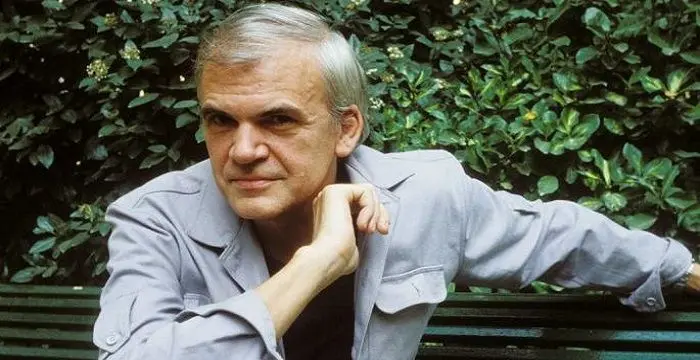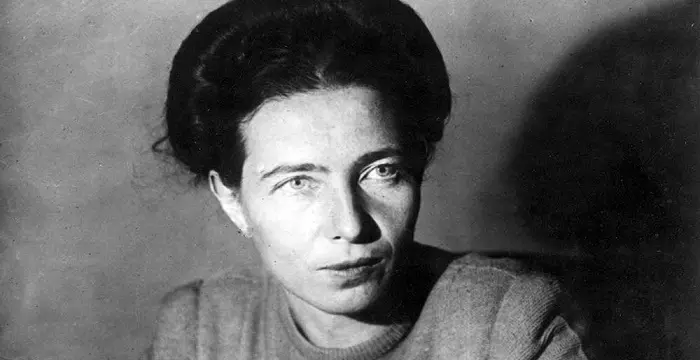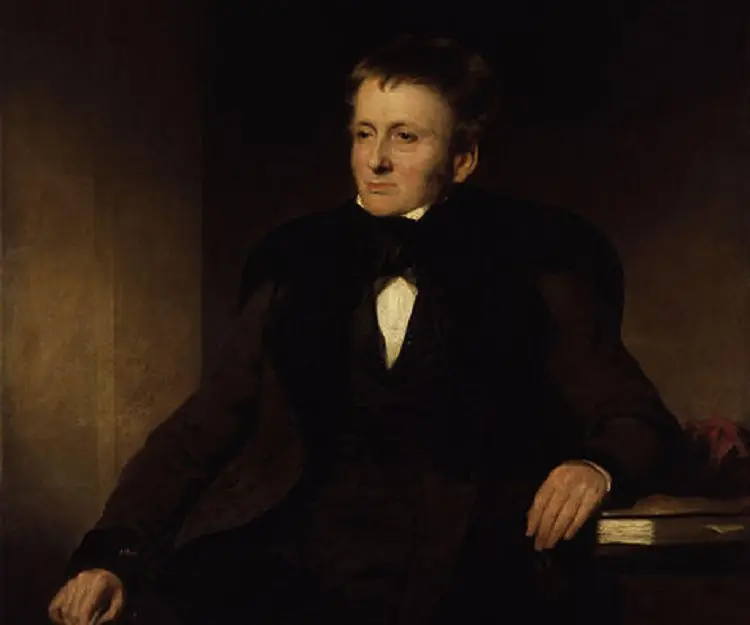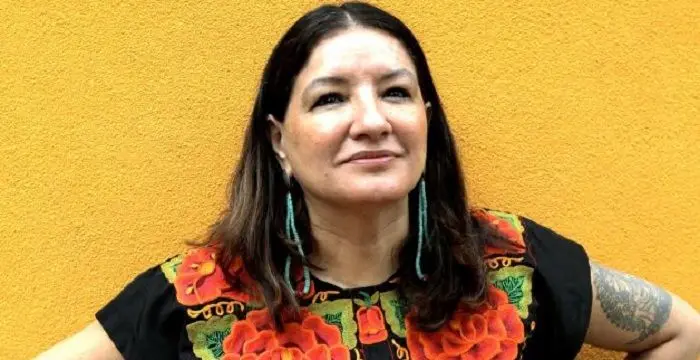
Thomas De Quincey - Non-Fiction Writers, Birthday and Life
Thomas De Quincey's Personal Details
Thomas De Quincey was an English writer best known for his book, ‘Confessions of an English Opium Eater’
| Information | Detail |
|---|---|
| Birthday | August 15, 1785 |
| Died on | December 8, 1859 |
| Nationality | British |
| Famous | Writers, Novelists, Non-Fiction Writers, Essayists, Biographers |
| Spouses | Margaret De Quincey |
| Siblings | William De Quincey |
| Known as | de Thomas Quincey, Thomas Penson De Quincey |
| Childrens | Catherine De Quincey |
| Universities |
|
| Birth Place | Manchester |
| Gender | Male |
| Sun Sign | Leo |
| Born in | Manchester |
| Famous as | Essayist |
| Died at Age | 74 |
// Famous Novelists
Charles Bukowski
Charles Bukowski was a German-born American novelist, short story writer and poet. With this biography, learn in details about his childhood, life, works, career and timeline
Milan Kundera
Milan Kundera is a Czech-born French writer known for his erotic and political writings. This biography of Milan Kundera provides detailed information about his childhood, life, achievements, works & timeline.
Simone de Beauvoir
Simone de Beauvoir was an eminent French writer, intellectual, activist, and philosopher. This biography profiles her childhood, life, thoughts, achievements and timeline.
Thomas De Quincey's photo
Who is Thomas De Quincey?
Thomas De Quincey was an English essayist and critic best known for his work, ‘Confessions of an English Opium Eater’. Born in a prosperous family, Quincey’s tryst at writing started after his brief elopement and comeback into the family. During his teens, he widely read the works of William Wordsworth and Samuel Taylor Coleridge and was influenced by them. Interestingly, Quincey’s literary career started as a means to meet the financial needs. He started off by contributing articles in various magazines and periodicals and soon found his first success with the book, ‘Confessions of an English Opium Eater’. Semi-autobiographical, the book gave a detailed account of his opium addiction and its effect on his life. Following the success, he came up with a large plethora of works in wide ranging field, from history to fiction, literary criticism to biographies and so on. His work stood out for its imaginative prose style that mixed an elucidation of other’s ideas with his personal reflection. De Quincey’s work influenced later literary figures such as Edgar Allan Poe and Charles Baudelaire
// Famous Essayists
Ruskin Bond
Ruskin Bond is an award winning Indian author of British descent. This biography of Ruskin Bond provides detailed information about his childhood, life, achievements, works & timeline.
Simone de Beauvoir
Simone de Beauvoir was an eminent French writer, intellectual, activist, and philosopher. This biography profiles her childhood, life, thoughts, achievements and timeline.
Sandra Cisneros
Sandra Cisneros is an American writer known for audaciously penning the realities and expectations from females in US and Mexico. This biography provides detailed information about her childhood, life, achievements, works & timeline
Childhood & Early Life
Thomas de Quincey was born on August 15, 1785, in Manchester, England to Thomas Quincey and Elizabeth Penson. His father, a successful merchant by profession, died when he was very young.
Young Quincey initially studied at the King’s Edward School, before being forcefully sent to Wingfield in Wiltshire. Extremely intelligent and brainy, he attended the Manchester Grammar School with an aim to obtain a scholarship at Oxford. It was during this time that he first chanced upon reading the works of Wordsworth and Coleridge, precisely the Lyrical Ballads.
Bored with the routine, he ran away from school and wandered around the Wales region until he was broke. He then left for London. Instead of returning to his family, he lived in starvation. This period of deprivation profoundly influenced his later writings.
Upon returning home, he attended Worcester College, Oxford in 1803. Following year, he first started using opium in the form of laudanum, a liquid tincture. Though he completed his studies, failure to take the oral exam led him to leave the university without a formal degree.
Career
Having finished college, he became a close associate of Coleridge and Wordsworth. By 1809, he settled at Grasmere at Wordsworth’s former home, Dove Cottage.
Quincey’s financial condition worsened by the end of 1810s. He had a huge family to support and his opium addiction had increased by manifolds. Monetary constraints led him to take up literary profession.
In 1818, he took up the post of the editor in a Tory newspaper ‘The Westmorland Gazette’. However, difference of opinion and his inability to meet deadlines led him to resign in 1819.
He actively started contributing his articles in newspapers and magazines, penning on a wide range of topics right from literary criticism to translations of German poetry and drama, to popularizing the theories of British economist David Ricardo.
It was in 1821 that he first found success for his writings with his article published in the London Magazine that gave an account of his experiences as an opium user. His article was so well-received that it took the form of a book in 1822 under the title, ‘Confessions of an English Opium Eater’.
‘Confessions of an English Opium Eater’ was one-of-its-kind book as it gave readers a glimpse of the pleasures and pains of opium usage. Semi-autobiographical in writing, the book detailed the extreme euphoria opium users experience while under the drug influence, but carefully admonishes the same by describing the depressive state that follows soon after.
Following the success of ‘Confessions of an English Opium Eater’, Quincey soon became a renowned figure in the literary circle. He started contributing extensively to magazines and leading English periodicals.
In 1823, he came up with the essay, ‘On the Knocking at the Gate of Macbeth’ which served as his first work as a literary critic. Brilliantly written, the work gave a detailed psychological analysis of Shakespearean criticism.
In 1825, he translated a German hoax novel, ‘Walladmor’ by Sir Walter Scott, a Scottish historical novelist and poet.
In 1832, he tried his hand at fiction with the novel, ‘Klosterheim’. He followed this up with, ‘Revolt of the Tartars’ and ‘The Avenger’. He wrote a book of short story, titled, ‘The Household Wreck’
Other than fiction and short story, he penned a series of biographies of writers, poets and politicians he personally knew. A large number of his works appeared in Blackwood's Edinburgh Magazine and its rival Tait's Magazine.
He came up with a series of reminiscence of prolific Lake Poets including Wordsworth, Coleridge and Southey, under the title, ‘Lake Reminiscence’ which served as one of his most important works.
In 1840s, his reputation as Britain’s one of the most prolific writers grew exponentially. Ticknor and Fields publishing firm, based in Boston, paid him royalties for his collected works issued in US. Within a matter of time, his works gained huge readership across US.
In 1850, he became a regular contributor in the Edinburgh periodical, Hogg’s Weekly Instructor. In 1856, the second edition of ‘Confessions’ was published in ‘Selections Grave and Gay from Writings Published and Unpublished by Thomas De Quincey’. The first volume of the edition appeared in 1853 and the last volume in 1860.
During the last phase of his life, he continued to write new articles, and assembled and revised his earlier works for new collected editions.
De Quincey’s masterpiece was the 1822 published book, ‘Confessions of an English Opium Eater’. The title aptly describes the content of the book which dealt with Quincey’s addiction of opium and its effect. Partly autobiographical in nature, the book gives a wide overview of the effect of opium, the pleasure and pain, the euphoria and nightmare that the continued use of the drug produced.
Major Works
De Quincey’s masterpiece was the 1822 published book, ‘Confessions of an English Opium Eater’. The title aptly describes the content of the book which dealt with Quincey’s addiction of opium and its effect. Partly autobiographical in nature, the book gives a wide overview of the effect of opium, the pleasure and pain, the euphoria and nightmare that the continued use of the drug produced.
Personal Life & Legacy
De Quincey entered into wedlock with Margaret Simpson in 1816. The couple was blessed with eight children of which only four survived. Margaret passed away in 1837.
His stint with opium started way back in 1804 when he used it to relieve himself from neuralgia. By 1813, he became a daily user of the drug. Between 1813 and 1819, he engaged in high dose of opium. What started as a health measure went on to become a pleasure-inducer and later an addiction that was hard to beat.
Arguably it is said that the effect of opium on De Quincey’s literary career was extremely high. Periods of low consumption of opium was marked as a literary unproductive phase while during high consumption days his literary output blossomed.
De Quincey passed away on December 8, 1859 in Edinburgh. He was buried in St Cuthbert's Churchyard at the west end of Princes Street.
// Famous Biographers
David McCullough
David McCullough, known as the ‘master of the art of narrative history’, is an American author, narrator, historian and lecturer. Check out this biography to get detailed information on his life.
Anna Comnena
Anna Comnena was the Greek princess and scholar who wrote the ‘Alexiad’. This biography of Anna Julia Cooper provides detailed information about her childhood, life, achievements, works & timeline.
Plutarch
Plutarch was a famous Greek biographer and essayist. This biography profiles his childhood, life, works, achievements and interesting facts about life.
Thomas De Quincey biography timelines
- // 15th Aug 1785Thomas de Quincey was born on August 15, 1785, in Manchester, England to Thomas Quincey and Elizabeth Penson. His father, a successful merchant by profession, died when he was very young.
- // 1803Upon returning home, he attended Worcester College, Oxford in 1803. Following year, he first started using opium in the form of laudanum, a liquid tincture. Though he completed his studies, failure to take the oral exam led him to leave the university without a formal degree.
- // 1804 To 1819His stint with opium started way back in 1804 when he used it to relieve himself from neuralgia. By 1813, he became a daily user of the drug. Between 1813 and 1819, he engaged in high dose of opium. What started as a health measure went on to become a pleasure-inducer and later an addiction that was hard to beat.
- // 1809Having finished college, he became a close associate of Coleridge and Wordsworth. By 1809, he settled at Grasmere at Wordsworth’s former home, Dove Cottage.
- // 1816 To 1837De Quincey entered into wedlock with Margaret Simpson in 1816. The couple was blessed with eight children of which only four survived. Margaret passed away in 1837.
- // 1818 To 1819In 1818, he took up the post of the editor in a Tory newspaper ‘The Westmorland Gazette’. However, difference of opinion and his inability to meet deadlines led him to resign in 1819.
- // 1821 To 1822It was in 1821 that he first found success for his writings with his article published in the London Magazine that gave an account of his experiences as an opium user. His article was so well-received that it took the form of a book in 1822 under the title, ‘Confessions of an English Opium Eater’.
- // 1822De Quincey’s masterpiece was the 1822 published book, ‘Confessions of an English Opium Eater’. The title aptly describes the content of the book which dealt with Quincey’s addiction of opium and its effect. Partly autobiographical in nature, the book gives a wide overview of the effect of opium, the pleasure and pain, the euphoria and nightmare that the continued use of the drug produced.
- // 1823In 1823, he came up with the essay, ‘On the Knocking at the Gate of Macbeth’ which served as his first work as a literary critic. Brilliantly written, the work gave a detailed psychological analysis of Shakespearean criticism.
- // 1825In 1825, he translated a German hoax novel, ‘Walladmor’ by Sir Walter Scott, a Scottish historical novelist and poet.
- // 1832In 1832, he tried his hand at fiction with the novel, ‘Klosterheim’. He followed this up with, ‘Revolt of the Tartars’ and ‘The Avenger’. He wrote a book of short story, titled, ‘The Household Wreck’
- // 1850 To 1860In 1850, he became a regular contributor in the Edinburgh periodical, Hogg’s Weekly Instructor. In 1856, the second edition of ‘Confessions’ was published in ‘Selections Grave and Gay from Writings Published and Unpublished by Thomas De Quincey’. The first volume of the edition appeared in 1853 and the last volume in 1860.
- // 8th Dec 1859De Quincey passed away on December 8, 1859 in Edinburgh. He was buried in St Cuthbert's Churchyard at the west end of Princes Street.
// Famous Writers
Joyce Meyer
Joyce Meyer is a Christian author and speaker. This biography provides detailed information about her childhood, life, achievements, works & timeline
Temple Grandin
Temple Grandin is a well-known American writer, autistic activist and animal expert. This biography profiles her childhood, life, achievements, career and timeline
Tennessee Williams
Tennessee Williams was one of the greatest playwrights of the 20th century. This biography of Tennessee Williams provides detailed information about his childhood, life, achievements, works and timeline.
Charles Bukowski
Charles Bukowski was a German-born American novelist, short story writer and poet. With this biography, learn in details about his childhood, life, works, career and timeline
Susan Sontag
Susan Sontag is an American critical essayist, cultural analyst, novelist, political activist, filmmaker and playwright of international repute. Read on to find out more about her childhood, career, profile and timeline.
Suze Orman
Suze Orman is an American television host, financial advisor, author and motivational speaker, famous for her ‘The Suze Orman Show’ on CNBC. This biography profiles her childhood, life, career, works, achievements and timeline.
Thomas De Quincey's FAQ
What is Thomas De Quincey birthday?
Thomas De Quincey was born at 1785-08-15
When was Thomas De Quincey died?
Thomas De Quincey was died at 1859-12-08
Where was Thomas De Quincey died?
Thomas De Quincey was died in Edinburgh
Which age was Thomas De Quincey died?
Thomas De Quincey was died at age 74
Where is Thomas De Quincey's birth place?
Thomas De Quincey was born in Manchester
What is Thomas De Quincey nationalities?
Thomas De Quincey's nationalities is British
Who is Thomas De Quincey spouses?
Thomas De Quincey's spouses is Margaret De Quincey
Who is Thomas De Quincey siblings?
Thomas De Quincey's siblings is William De Quincey
Who is Thomas De Quincey childrens?
Thomas De Quincey's childrens is Catherine De Quincey
What was Thomas De Quincey universities?
Thomas De Quincey studied at Brasenose College, Oxford, Worcester College, Oxford, University of Oxford, Manchester Grammar School
What is Thomas De Quincey's sun sign?
Thomas De Quincey is Leo
How famous is Thomas De Quincey?
Thomas De Quincey is famouse as Essayist













